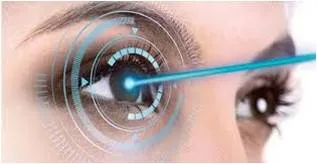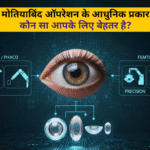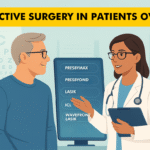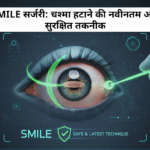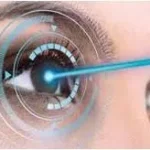LASIK surgery is a widely used procedure for vision correction, helping many individuals reduce their dependence on glasses or contact lenses. While the surgery itself is quick, the healing process is just as important. Knowing the right tips to improve recovery time post-LASIK can differentiate between a smooth healing journey and potential complications. By caring for your eyes and following medical advice, you can ensure optimal healing and a clear vision outcome.
Understanding LASIK Recovery
LASIK surgery reshapes the cornea to correct refractive errors such as nearsightedness, farsightedness, and astigmatism. While the procedure itself takes about 15 minutes per eye, the body needs time to heal fully. LASIK surgery recovery time varies from person to person, but most people experience noticeable vision improvement within 24 to 48 hours. However, complete healing can take several weeks. Understanding this process helps patients take the necessary precautions to support recovery.
Immediate Post-Surgery Care
First 24 Hours
The first day after LASIK is critical for recovery. Some initial discomfort, light sensitivity, and blurry vision are common. Taking the following precautions after LASIK surgery can help reduce discomfort and support healing:
- Resting the eyes as much as possible.
- Avoiding screens, bright lights, and strenuous activities.
- Use prescribed antibiotics and lubricating eye drops to prevent infections and dryness.
- Wearing protective eye shields while sleeping to prevent accidental rubbing.
- Arranging for someone to drive you home, as your vision may be temporarily unclear.
Following these initial steps helps create the best conditions for healing.
Managing Discomfort
Mild irritation, dryness, or a foreign body sensation in the eyes are common after LASIK. To ease discomfort:
- Use lubricating eye drops as directed to relieve dryness.
- Refrain from rubbing or touching your eyes to avoid disturbing the healing process.
- Apply a cool compress around the eyes to reduce irritation.
- Take doctor-recommended pain relievers if needed.
- Follow all medication instructions carefully.
These simple steps can make the recovery process more comfortable.
Protecting Your Eyes
Proper eye protection is crucial after LASIK to prevent irritation and infections. Some important precautions after LASIK surgery include:
- Wearing UV-protected sunglasses outdoors to shield the eyes from harmful rays and wind.
- Avoid environments with dust, smoke, or strong odours that may irritate the eyes.
- Staying away from swimming pools, hot tubs, and saunas for at least two weeks to prevent infections.
- Not using eye makeup for a week to avoid contamination.
- Avoid any activities that could result in accidental eye contact or trauma.
Taking these measures ensures that the healing process is not interrupted.
Lifestyle Adjustments
For a smoother recovery, temporary lifestyle changes may be necessary. Patients should:
- Avoid strenuous exercise and contact sports for at least a few weeks.
- Minimise screen time to prevent eye strain.
- Sleep with the head slightly elevated to reduce eye pressure.
- Avoid exposure to air conditioning or strong winds, which can dry out the eyes.
Making these small adjustments can help speed up healing and prevent unnecessary discomfort.
Diet and Hydration
A nutritious diet plays a key role in post-LASIK recovery. Certain foods can support healing and maintain eye health:
- Vitamin A & C: Found in carrots, oranges, spinach, and bell peppers, these promote corneal healing.
- Omega-3 Fatty Acids: Present in salmon, walnuts, and flaxseeds, these help combat dry eyes.
- Hydration: Drinking enough water (at least 8 glasses a day) keeps the eyes moisturised and supports overall healing.
Good nutrition helps the body recover efficiently and keeps the eyes comfortable.
Avoiding Eye Strain
Reducing eye strain is essential to aid healing. Patients can do this by:
- Limiting screen time, particularly in the first few days after surgery.
- Using the 20-20-20 rule: Every 20 minutes, look at something 20 feet away for 20 seconds.
- Reading in well-lit conditions to avoid putting extra strain on the eyes.
- Using artificial tears to maintain eye moisture and comfort.
By reducing strain, the eyes can heal more effectively without unnecessary stress.
Common Mistakes to Avoid
Certain habits can slow down LASIK recovery time. To prevent setbacks, patients should avoid:
- Skipping follow-up appointments – Regular check-ups help track healing progress.
- Ignoring signs of complications – If pain, redness, or worsening vision occurs, seek medical advice immediately.
- Resuming intense physical activities too soon – Give the eyes sufficient time to heal before engaging in strenuous activities.
- Failing to use eye protection – Sunglasses and protective eyewear can prevent irritation from environmental factors.
Avoiding these common mistakes ensures a smoother recovery process.
When to Seek Medical Help
While most patients recover without issues, some symptoms may require immediate medical attention. Contact an eye doctor if you experience:
- Sudden or severe vision loss.
- Persistent pain or extreme discomfort.
- Excessive redness, swelling, or unusual discharge.
- High sensitivity to light that does not improve.
Early intervention can prevent complications and ensure proper healing.
Conclusion
Following the right tips to improve recovery time post-LASIK ensures a smooth healing process. By taking care of your eyes, protecting them from irritation, and following medical recommendations, you can support faster healing and long-term vision clarity. Attending all follow-up appointments and maintaining eye health habits will help you achieve the best possible results.
Healing starts with care. Schedule your LASIK recovery check-up at the Centre for Sight. Book Here
FAQs
Most patients notice improvement within days, but full healing can take up to three months. Recovery time varies depending on individual healing responses and post-surgery care.
It is advisable to avoid screens for at least 24 hours. Gradually reintroduce screen use while taking breaks to prevent strain.
Light activities can be resumed after a week, but high-impact sports and swimming should be avoided for at least a month to reduce the risk of complications.
There are no strict dietary restrictions, but limiting processed foods, salty snacks, and alcohol can help reduce inflammation and support healing.
Driving should only be resumed after a follow-up visit with the eye doctor confirms that vision is stable.
